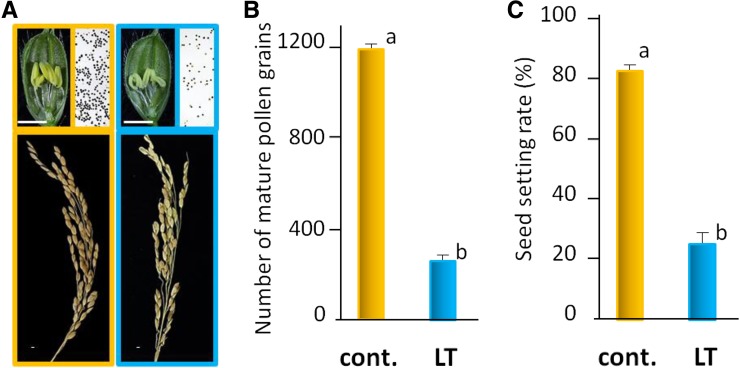Figure 1.
Severe abortion of pollen formation and reduction of seed setting occur in response to LT. The japonica cv Sasanishiki was cultured under normal (orange frame; as a control, an experimental paddy field at average maximum 27°C and minimum 19.4°C) and LT (blue frame; using a running cold-water system at 19°C, 25 cm deep) conditions from the panicle primordial stage to the completion of heading at the Furukawa Agricultural Experiment Station, Miyagi Prefecture, Japan (Supplemental Fig. S1). A, Representative features (pistil, anthers, and pollen) are shown in cv Sasanishiki spikelets that were dissected at the heading period with or without LT treatment. The pollen at the heading period was stained with iodine solution. The bottom images reveal the representative structures of mature ears after LT treatment. Bars = 2 mm. B, Number of pollen grains in anthers cultured at normal temperature and LT (n = 18 anthers tested in each plant). C, Seed-setting percentage was calculated after grain filling in cv Sasanishiki (n = approximately 70 ears in six plants with or without LT treatment). Values are means ± se. Letters denote statistical differences with Tukey’s test (P < 0.05). Orange columns, Control samples (cont.); blue columns, LT-treated samples.

